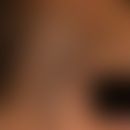Synonym(s)
HistoryThis section has been translated automatically.
DefinitionThis section has been translated automatically.
Autosomal-recessive inherited metabolic disorder with increased iron absorption and consecutive hemosiderin deposition and tissue damage in various organs. The total iron content of the organism is increased from normally 3-5 g to 20-80 g.
You might also be interested in
Occurrence/EpidemiologyThis section has been translated automatically.
EtiopathogenesisThis section has been translated automatically.
Classification of the different types of hemochromatosis types of hemochromatosis:
- Type 1 (classic hemochromatosis): Autosomal recessive inherited mutations of the HFE 1 gene (hereditary familial hemochromatosis gene 1 - mainly C282Y/H63D; gene locus: 6p21.3). Prevalence of clinically manifest hemochromatosis in Europe 1:1,000; m:w=10:1 (cause: iron loss via menstruation).
- Type 2 (juvenile hemochromatosis): rare, autosomal recessive mutations of the HFE 2 gene (hereditary familial hemochromatosis gene 2; gene locus: 1q21). Other forms of type 2 are caused by mutations of the hepcidin antimicrobial peptide gene (HAMP gene; gene locus: 19q13). Iron overload before the age of 30. Frequently heart failure and hypogonadism.
- Type 3: Autosomal recessive inherited mutations of the transferrin receptor 2 gene (TFR 2 gene; gene locus: 7q22).
- Type 4: Autosomal dominant inherited mutations of the SLC11A3 gene (solute carrier family 11 A gene; gene locus: 2q32) with consecutive defect of ferroportin.
ManifestationThis section has been translated automatically.
ClinicThis section has been translated automatically.
Iron overload of <10g usually progresses clinically without tangible symptoms (latent stage). Higher tissue iron concentrations (>10g) initially lead to discrete changes and later to manifest hemosiderosis. Clinical manifestations of manifest haemochromatosis in relation to their percentage frequency:
- Liver cirrhosis (94%)
- Skin changes: (82%):
- smoky grey, blue-brown or bronze-like, patchy or extensive skin discoloration, particularly pronounced in sun-exposed areas, especially on the face. Further on also in the armpits, the genital region, also on the lower extremities (see illustration) and in scars
- Other: diffuse effluvium
- Hepatomegaly (76%)
- Weakness, fatigue (73%)
- Reduced potency and libido (56%)
- Diabetes mellitus (53%)
- Upper abdominal discomfort (50%)
- Testicular atrophy (50%)
- Arthralgia (47%)
- Cardiomyopathy (35%): There is an increasing deposition of iron in the sarcoplasm of the myocardial cells, resulting in ventricular dysfunction. Dilatation of the heart chambers with signs of heart failure are possible.
HistologyThis section has been translated automatically.
Histology of the skin: Characteristic are increased melanin proliferation in the stratum basale and hemosiderin deposits, especially in the middle and deep corium (iron staining for differentiation).
DiagnosisThis section has been translated automatically.
History + Clinic; Laboratory: plasma ferritin ↑ (w=200ug/l; m=>300ug/l); transferrin saturation ↑ (w>45%; m>50%) - Remark: a normal trasferritin saturation largely excludes hemochromatosis. HFE genetic diagnosis (genetic findings can only be assessed in connection with clinical symptoms). Liver biopsy with iron detection (Berlin blue reaction)
Differential diagnosisThis section has been translated automatically.
Internal:
- Iron overload in hemolytic anemia, e.g. in myelodysplastic syndrome.
- Alcoholic siderosis.
- Sideroses in the context of chronic liver diseases
Dermatological (DD clinical macro aspect)
- Haemosiderosis cutis (deposition of haemosiderin in the skin; localized or disseminated, large or small-spotted, yellow or rich brown deposits of haemosiderin in the skin, the distribution pattern and intensity of which are defined by the underlying disease. Occurrence e.g. in purpura pigmentosa progressiva or chronic venous insufficiency. No solar accentuation)
- Porphyria cutanea tarda (seasonal (spring, summer) skin changes that occur more frequently and are also triggered by minor mechanical stress. Blistering! Hemorraghic crusts, erosions, atrophic scars, hyperpigmentation and hypopigmentation, postbullous milia. Diffuse melanosis on the face and neck; hypertrichosis of the zygomatic region and cheeks; elastosis)
- M. Addison's disease (solar accentuated hyperpigmentation (initially indistinguishable from normal sun tanning). No poikilodermatic aspect. Also pigmentation of armpits, nipple and genital area; pigmentation of hand lines, scars, pressure marks; gray-brownish pigmentation of mucous membranes.
- Melasma (Mostly sharply defined, large or small-spotted, closed or reticular hyperpigmentation (melanosis) in sun-exposed areas, which either fade completely or are barely visible in winter, but recur in loco in the following sunny season. Histology: lack of iron detection!)
- Exogenous ochronosis (medical history is diagnostic)
- Naevus Ota (histology is diagnostic; no poikilodermatic aspect)
- Hepatolenticular degeneration (Wilson's disease)
TherapyThis section has been translated automatically.
Internally: Low iron diet (avoid white beans, peas, lentils, leeks, soybeans, egg yolks, liver, heart, brewer's yeast).
Bloodletting 1 time per week (with 500 ml of blood an average of 250 mg iron is removed).
Iron chelators:
- If necessary administration of deferoxamine (e.g. Desferal®), 100 mg deferoxamine binds 8 mg iron.
- Alternative: Deferasirox
Progression/forecastThis section has been translated automatically.
LiteratureThis section has been translated automatically.
- Gorbatsch S et al. (2020) Irregular, blotchy hyperpigmentation of the left nose, cheek and eyelid. J Dtsch Dermatol Ges 18:50-54.
- Hanot VC, Chauffard AME (1882) Cirrhose hypertrophique pigmentaire dans le diabète sucré. Rev Médecine (Paris) 2: 385-403
- Niederau C (2003) Hereditary hemochromatosis. Internist 44: 191-205
- Rihl M et al. (2004) Arthropathy of hereditary hemochromatosis. Z Rheumatol 63: 22-29
- Troisier CE (1871) Diabète sucré.Bull Soc Anatomique (Paris) 16: 231
- Von Recklinghausen FD (1889) On hemochromatosis. Berlin Clinical Weekly 26: 92
Incoming links (20)
Addison's disease; Bloodletting; Bronze diabetes; Cardiomyopathy restrictive; Cirrhosis pigmentaire diabétique; Crystal arthropathy; Dermatitis-arthritis syndromes; Dyschromia; Hepatocellular carcinoma; Iron storage disease; ... Show allOutgoing links (10)
Addison's disease; Effluvium; Ferritin; Hemosiderosis cutis; Melasma; Nevus of Ota; Ochronosis; Porphyria cutanea tarda; Transferrin; Wilson's disease;Disclaimer
Please ask your physician for a reliable diagnosis. This website is only meant as a reference.






